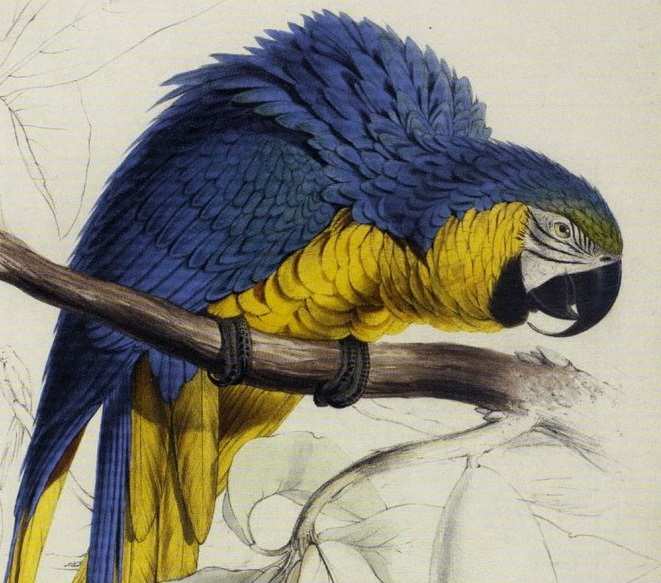Originally published in The World of Interiors, March 2017.
The owl or the pussycat, the intrepid jumblies, the quangle-wangle or the plum-pudding flea: many of us have our favourite characters from the strange, playful verses of Edward Lear. Much less widely cherished are the works that sustained Lear during his life; for he was in fact an artist of significant talent and renown, at first of natural history illustrations, later of landscapes. It is the first of these that forms the focus of The Natural History of Edward Lear, in which Robert McCracken Peck makes the case for Lear as “among the best natural history painters of all time”. It is a bold claim, but persuasively justified throughout this handsome volume.
We begin in nineteenth-century London, amid a flourishing of learned societies, where artists and explorers, naturalists and collectors came together to share ideas about art, science and nature. In 1826 the Zoological Society of London was founded, and the young Lear was enchanted by the exotic animals he encountered there. Inspired by his sister, Ann – twenty-one years his senior – and encouraged by a succession of influential collectors and publishers, Lear gradually established a reputation as a highly talented illustrator. Despite having received no formal training, his skills were so respected that he was enlisted to give drawing lessons to Queen Victoria
Peck evokes both Lear and the era adroitly. Colonial expansion and economic growth saw Britain take over the mantle from France in the production of natural history books and paintings. Lear was at the forefront. The finest French natural history illustrations had been largely “conceived as representative examples of a species”. They were usually drawn from skins of dead animals or even copied from the works of other artists. Lear preferred to draw from life. His depictions of parrots in particular are like “portraits of individual birds”: beautiful, yes, but also full of personality, worthy of comparison even with the great John James Audubon. From raspberry plants to cockatoos, a tiny field vole and an almost haughty flamingo: 200 colour illustrations show the sheer range of Lear’s talent as a draughtsman, painter and printmaker.
The Natural History of Edward Lear is an insightful portrait of a reserved, self-contained man at a frenetic time in the history of art and science. Peck’s close analyses of individual illustrations are always enriching, and he is at his best when the many threads of Lear’s idiosyncratic life are woven expertly together. The book’s only weak section comes towards the end in a series of potted profiles of artists influenced by Lear. As Peck himself notes, apart from the enduring popularity of Lear’s art and poetry, perhaps the most fitting acknowledgement of his prowess as a natural history illustrator was the naming of Anodorhynchus leari – Lear’s macaw. This book is itself another fine tribute.
